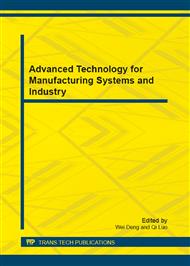p.765
p.771
p.775
p.779
p.783
p.787
p.792
p.797
p.801
Comparing Level Set Method and Canny Algorithm for Edge Detection to Tongue Diagnosis in Traditional Chinese Medicine
Abstract:
The tongue diagnosis is an important diagnostic method in Traditional Chinese Medicine (TCM). Human tongue is one of the im¬portant organs which contain the information of health status. In order to achieve an automatic tongue diagnostic system, an effective segmentation me¬thod for detecting the edge of tongue is very important. We mainly compare the Level Set Method and Canny algorithm for edge segmentation. The segmentation using Canny algorithm may produce many false edges after cutting; thus, it is not suitable for use. But, Level Set Method can produce better edge contour. Therefore, it may be useful in clinical automated tongue diagnosis system. Experiments show the results of these techniques.
Info:
Periodical:
Pages:
783-786
Citation:
Online since:
November 2012
Authors:
Price:
Сopyright:
© 2012 Trans Tech Publications Ltd. All Rights Reserved
Share:
Citation:


